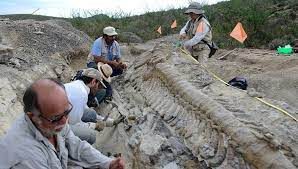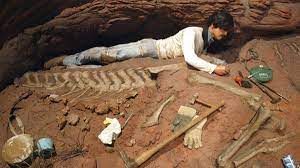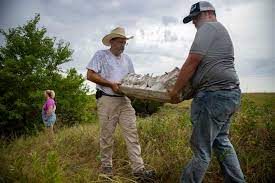Mexican scientists have made an exciting discovery, identifying a new species of dinosaur in northern Mexico almost a decade after its initial discovery.

Named Tlatolophus galorum, this crested dinosaur is believed to have lived 73 million years ago. Its crest, resembling a symbol used by Mesoamerican people in ancient manuscripts to represent communication and knowledge, led researchers to dub it a “peaceful but talkative dinosaur.”
The investigation, initiated in 2013 by specialists from the National Institute of Anthropology and History (INAH) and the National Autonomous University of Mexico (UNAM), began with the discovery of a tail in the state of Coahuila. Subsequent excavations revealed additional bones, including the femur and scapula.

Published in the scientific journal Cretaceous Research, the findings were deemed an “exceptional case” in Mexican paleontology by the INAH. The dinosaur’s herbivorous nature and the specific conditions of its preservation were attributed to the region’s tropical climate approximately 72 to 73 million years ago.
According to the researchers, the dinosaur likely had ears capable of hearing low-frequency sounds, suggesting it was a peaceful yet communicative creature.

The name Tlatolophus is derived from the Indigenous Mexican language Nahuatl and the Greek term meaning “chest,” while Galorum is a reference to the scientists involved in the research.
The institute stated that the dinosaur’s preservation was due to the “huge herbivore dinosaur” dying in a body of water rich in sediment, allowing rapid burial and preservation through the ages.

The researchers theorize that Tlatolophus emitted strong sounds, possibly for scaring away predators or for reproductive purposes. This discovery sheds light on the rich prehistoric biodiversity in the region, offering valuable insights into the ancient ecosystems of northern Mexico.





